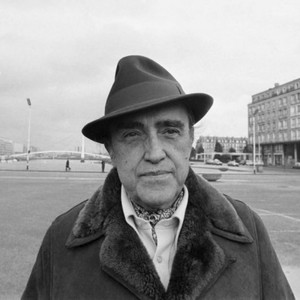
Oscar Niemeyer was born in Rio de Janeiro Brazil in 1907. He graduated from the Escola Nacional de Belas Artes in Rio de Janeiro in 1934, and in 1935 he joined the office of Lucio Costa. In 1936 he joined the team of Brazilian architects collaborating with Le Corbusier on a new Ministry of Education and Health in Rio de Janeiro.
Niemeyer's seminal architecture is famous for breaking up the dictatorial character of functionalism and introducing the beauty of curved and asymmetric forms. His work was inextricably linked to the progress of reinforced concrete technology. This new material gave him freedom; he was able to present new and unique ideas, far from classical or neo-classical inspiration. His furniture design is reminiscent of his architecture, drawing heavily on sinuous forms, delicate curves and Brazilian identity.
In 1942 Niemeyer created a series of recreational buildings, which borrowed extensively from the expressive Brazilian Baroque style of architecture. In 1956 Niemeyer was appointed architectural adviser to Nova Cap - an organization charged with implementing Lucio Costa's plans for Brazil's new capital. The following year Niemeyer became its chief architect, designing most of the city's important buildings. Niemeyer's buildings mark a period of creativity and modern symbolism. Niemeyer continued to work on Brazilia in the late 1960s and started teaching at the University of Rio de Janeiro and working in private practice. He was awarded the Gold Medal of the American Institute of Architecture in 1970.
The Creator's Words "Here, then, is what I wanted to tell you of my architecture. I created it with courage and idealism, but also with an awareness of the fact that what is important is life, friends and attempting to make this unjust world a better place in which to live."